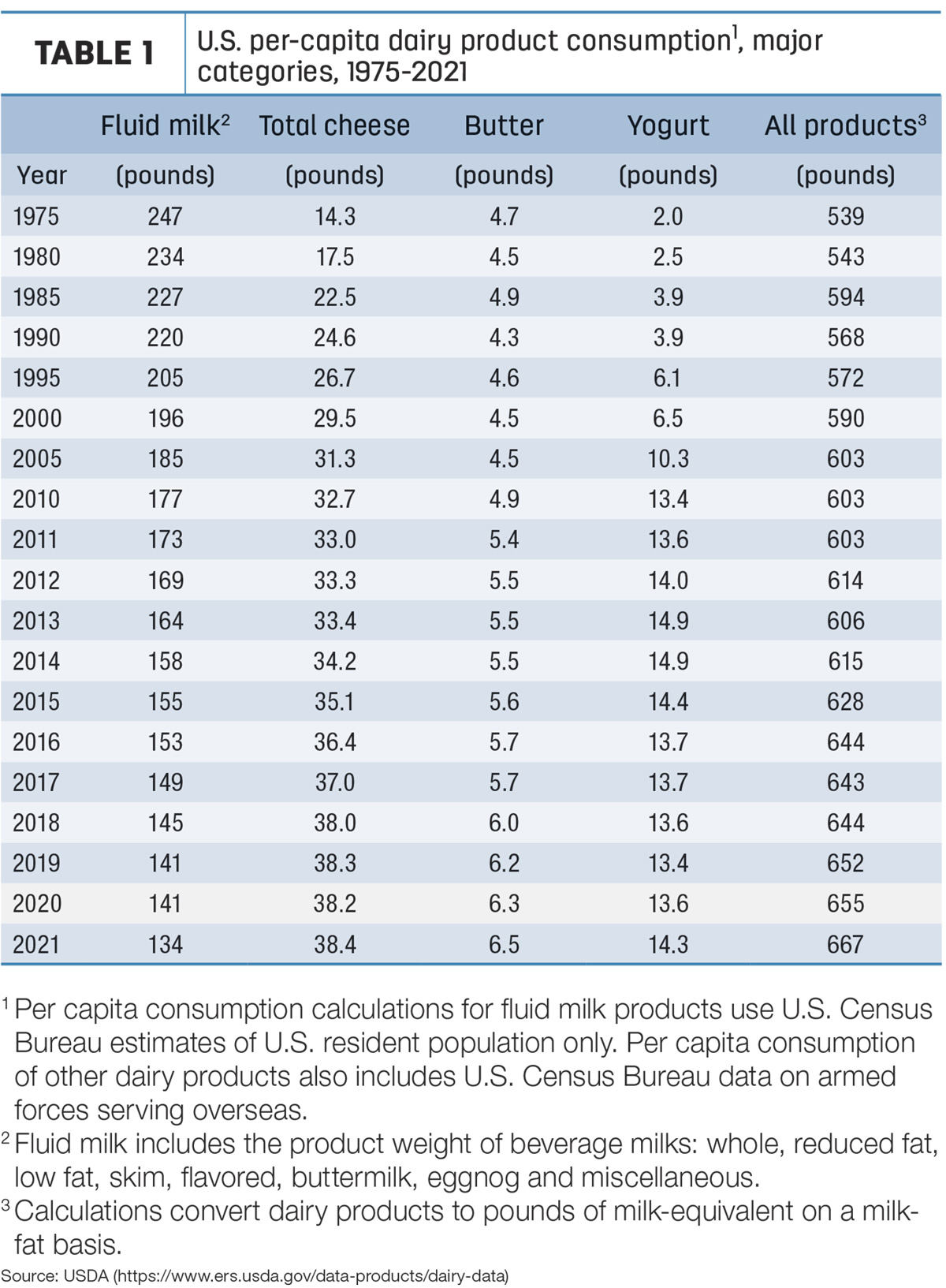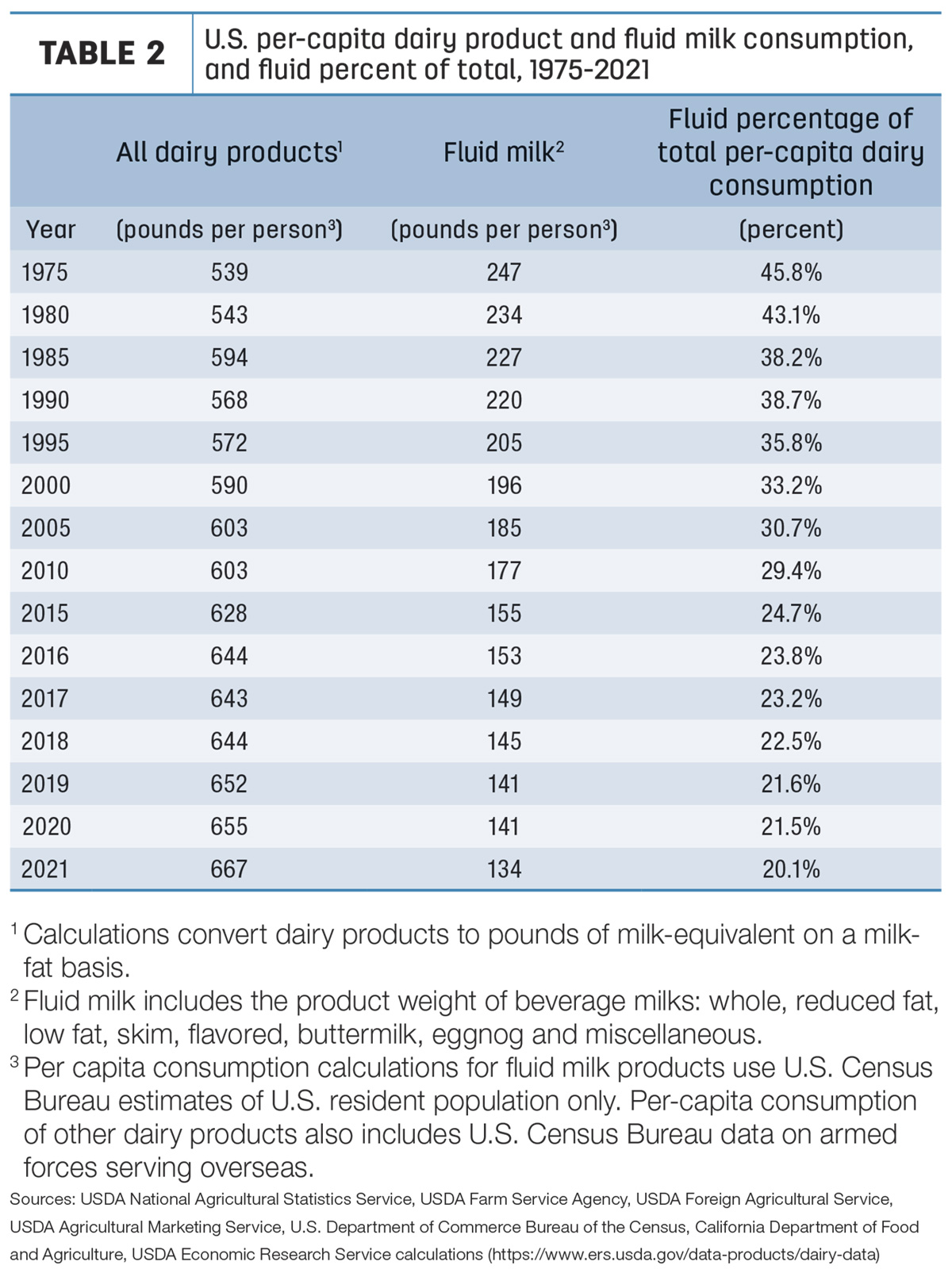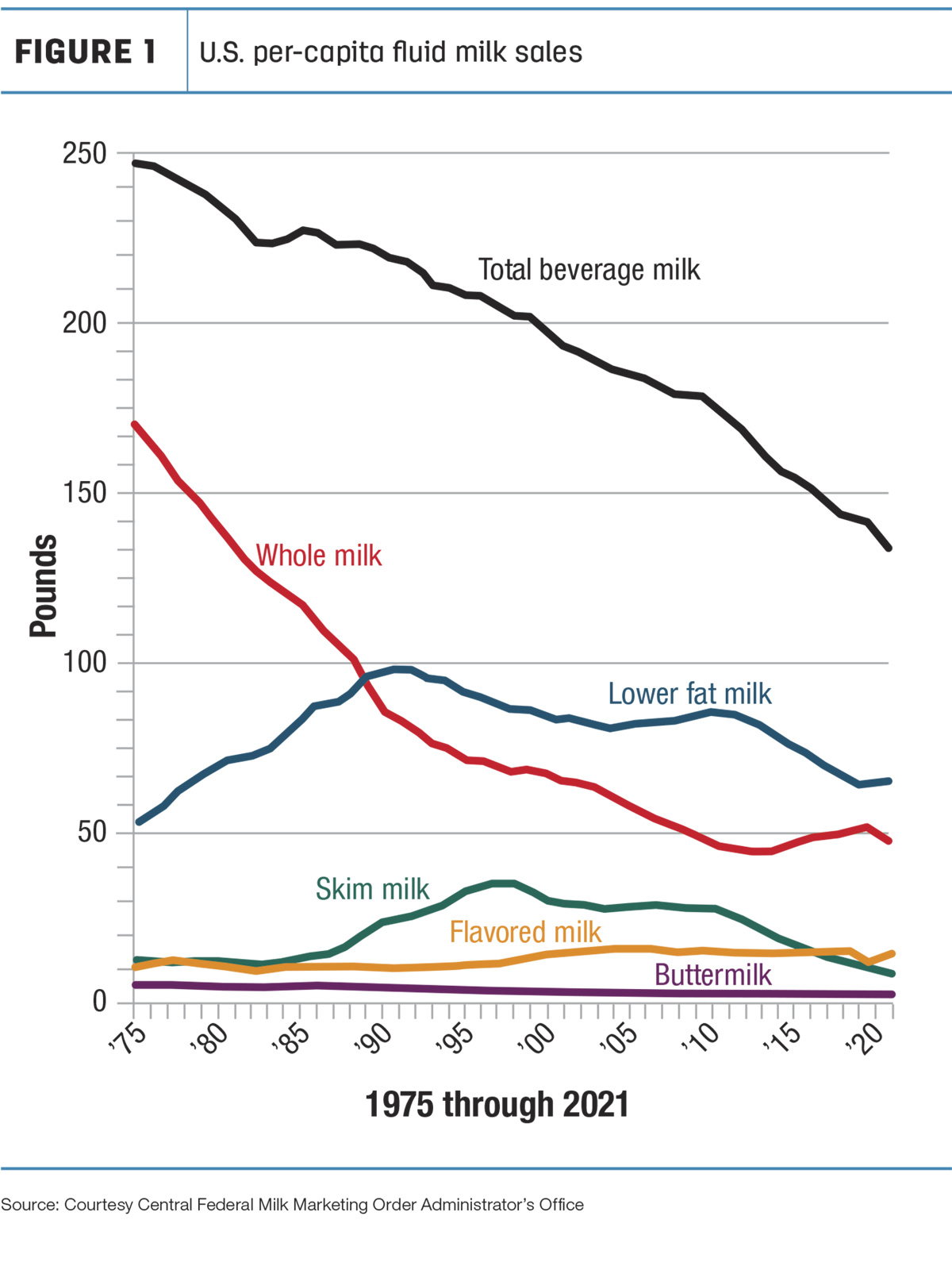Whether at home or returning to restaurants and schools, U.S. consumers added more dairy products to meals and snacks in 2021, according to new data from the USDA Economic Research Service (ERS).
Annual data from USDA ERS, which began tracking annual consumption of dairy products in 1975, shows U.S. per-capita consumption of dairy products (on a milk-equivalent, milkfat basis) jumped nearly 12.5 pounds from 2020, to 667 pounds in 2021 (Table 1). It was the largest year-over-year increase since 2015-16. Per-capita dairy product consumption has risen 23 pounds in the past five years, from 644 pounds in 2016, and was up 99 pounds since 1990.
U.S. consumers continue to eat more dairy in the form of cheese, butter and yogurt, while the long-term decline in the consumption of fluid milk persists (Table 1).

Cheese consumption rises
Consumption of American-type cheeses rose to about 16.06 pounds per capita in 2021, thanks to small increases in both cheddar and other cheeses. Consumption of Italian-type cheeses also increased slightly, to 15.83 pounds per person, likely due to a return to restaurants following COVID-19 pandemic shutdowns. It marked the second straight year that per-capita consumption of American cheeses surpassed Italian cheeses, reversing a decade-long period that those categories were flipped.
Consumption of Swiss, blue, brick, muenster, cream/Neufchatel and Hispanic cheeses were all steady or slightly higher than the year before. Cottage cheese consumption slipped just below 2 pounds per person for the first time, according to USDA records.
The end result: At 39.4 pounds, total natural cheese consumption in 2021 was up about 1.2 pounds per person from the year before and a new record high.
Consumption of process cheese and cheese foods and spreads added another 8.24 pounds, the highest total since 1999.
Butter, yogurt consumption increases
Per-capita consumption of butter (6.5 pounds) rose 0.2 pound in 2021, a fifth consecutive annual increase. After posting declines for most of the last quarter of the 1900s, annual per-capita butter consumption has now increased 2 pounds since 2000.
Last year, after reversing a six-year trend in which consumption of yogurt (other than frozen) either held steady or declined, that category posted another increase in 2021, to 14.3 pounds per capita. It remains about 0.6 pound less than the peak in 2013-14.
Per-capita consumption of other dairy products was mixed. Americans indulged in less regular, low-fat and nonfat ice cream (about 18.4 pounds), switching to frozen yogurt and sherbet. Consumption of dry products (milk and whey powders) were mostly unchanged from 2020.
Fluid milk continues slide
U.S. per-capita consumption of fluid milk was estimated at 134 pounds in 2021, down another 7 pounds from 2020 (Table 2). Longer-term, per-capita fluid consumption was down 62 pounds (roughly 7.5 gallons) since 2000.

As a percentage of total U.S. dairy product consumption, fluid beverage milk slipped from nearly 46% in 1975 to about 20% in 2021.
U.S. consumers ended a seven-year trend in which sales of whole milk increased from the previous year (Figure 1). Total U.S. sales of whole milk fell to 15.8 billion pounds, down 839 million pounds from 2020. Sales of reduced-fat (2%), low-fat (1%) and skim milk also declined a combined 1.96 billion pounds. Those declines were only partially offset by increased sales of flavored milk, buttermilk and eggnog. All told, fluid product sales were down 1.85 billion pounds from 2020.

Organic milk represented about 6.3% of all fluid milk product sales in 2021, up from about 6.2% in 2020.
Serving the fluid market, the number of fluid processing plants in the U.S. increased in 2021 to 466, the highest total since 1996.
Looking ahead: Resilience, exports
Thus far in 2022, dairy product sales have been resilient under the pressures of inflation. Credit extends from the farm to the table, with numerous touchpoints along the supply chain.
“The growth and evolution of U.S. dairy is one of the greatest success stories in food and beverage today,” said Michael Dykes, president and CEO of the International Dairy Foods Association. “U.S. consumers turn to dairy for health and wellness, nutrition, escape, celebration and so much more. That love for dairy is especially important now when so many shoppers are careful with their spending, underscoring that dairy remains affordable and nourishing to consumers at all income levels.
“Record U.S. dairy exports demonstrate that the world is turning to American dairy, too, putting the United States on a path to be the world’s leading supplier of affordable, sustainable dairy nutrition,” he concluded.







